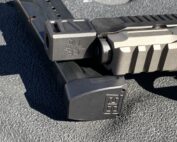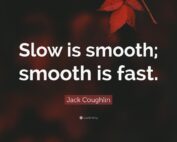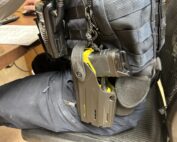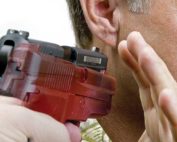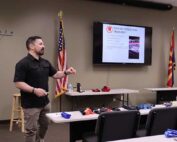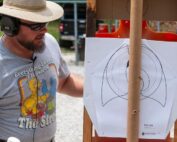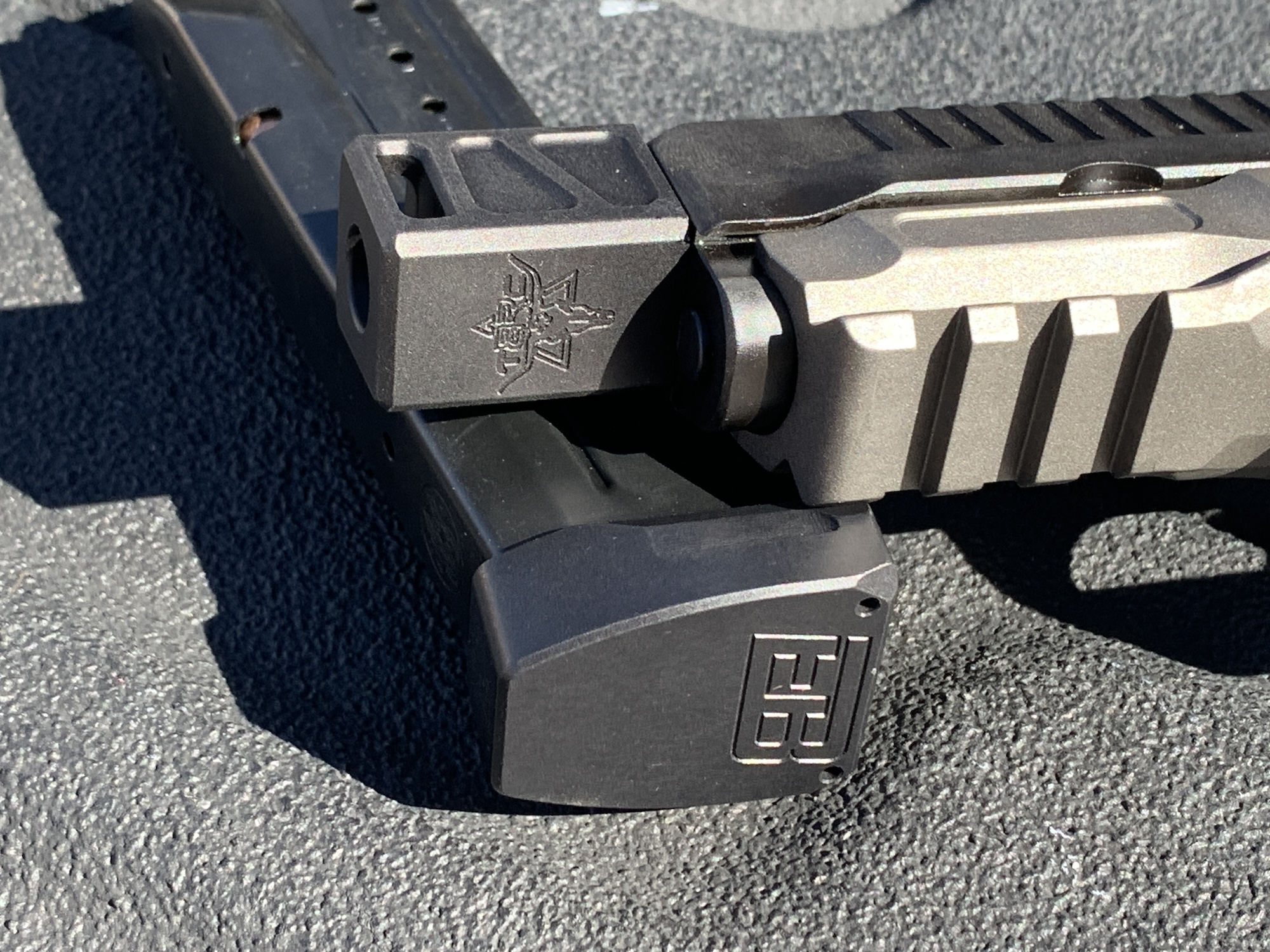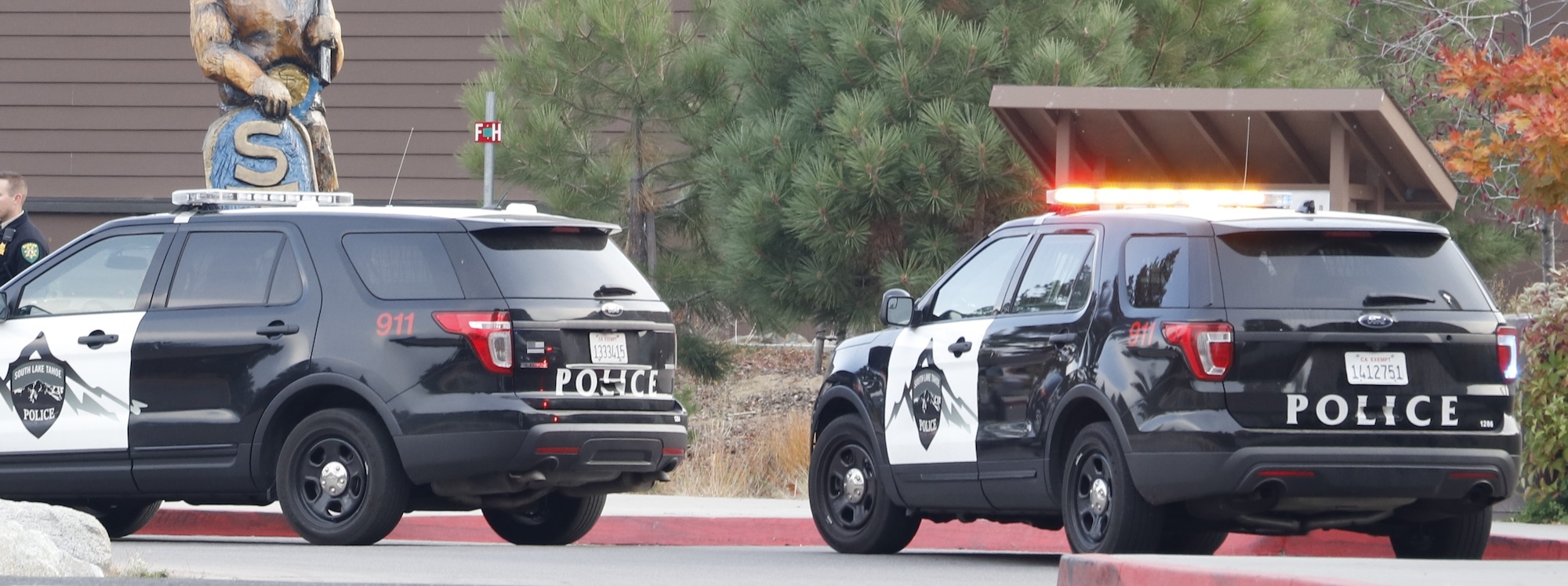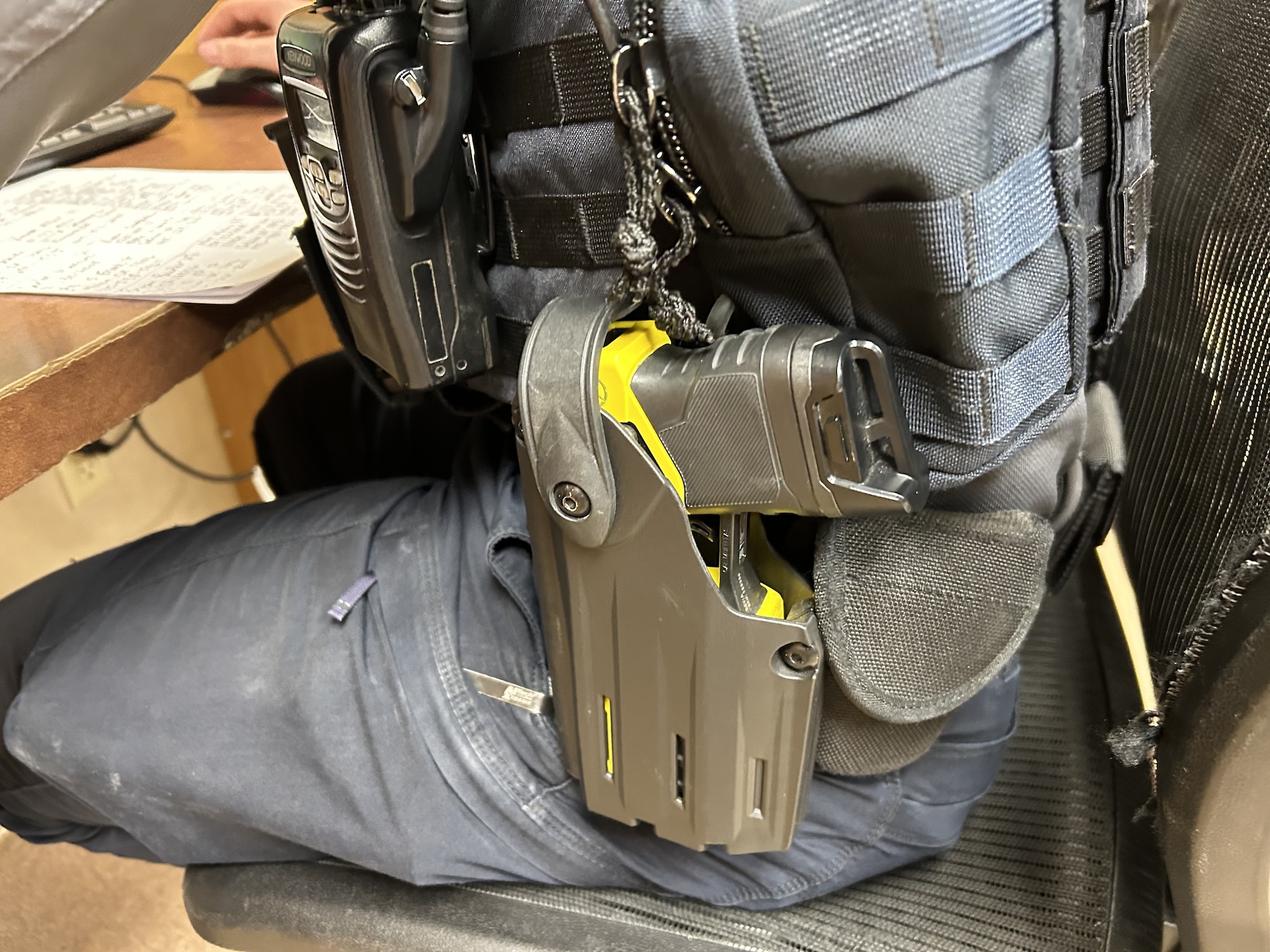
AMP-1
Simple, Affordable Software.
Have you ever watched any of the CSI series? Every time they have a case, one of the main characters will walk into the sparkling and pristine glass enclosed laboratory cubical of a minor character, hand them an evidence collection tube and say, “we need this right away.” If you had ever walked into my agency’s lab, you wouldn’t find a glass enclosed cubical. There was a box in the elevator lobby where you put the evidence collection tube with the case number and the processing you required. In about 6 months a note would appear in your in-box with the result.
Not so with the TV types. They get the results right after the next Depends commercial. When it comes to video evidence, the result is even faster, the Field Evidence Tech hands the video technician a USB drive, they plug it into a computer the size of a 3-car garage and everything is immediately projected around the room on seven different monitors. “Can you enhance the license plate,” they ask. Three key strokes and enter later, the plate appears on the car from the video — taken at night, in a rain storm from 2 miles away, yet it appears as if it was taken just 2′ away, with a 60 megapixel $45,000 Hasselblad H4d digital camera.
This is reality vs hyper–reality. I’m told everything we see on CSI is real. But, even they admit, there’s not a single lab in the country with all these capabilities under one roof — not even at the FBI’s Super Lab outside of DC.
Now everyone not smart enough to avoid jury duty, and who gets seated on a case, fully expects 8×10 glossy photos taken of the crime (while in progress) and full Technicolor Cinemascope movies of the bad guys, placing them at the scene. It’s that or the prosecutor runs the risk of having the jury think we’re hiding something from them. Or they’ll think it’s a weak case, and the miscreant at the defense table is innocent and simply being railroaded.
Video Evidence
Video capabilities are of special concern to street cops and investigators. This is one area which can make or break your case in the first 24 hours and is one of the greatest investigative tools we have, but unless you can get it right away, it has less worth to the investigator. Don’t get me wrong; it’s still valuable to the case, as defense attorneys really hate to see their buck-toothed, mouth-breathing client’s smiling face as he shoves a cheap chrome revolver in the store clerk’s face and announces, “give me the money.” Street cops and detectives need to use that video evidence to make a quick arrest, get the cretin off the street and protect the public from the danger these people pose.
What if a street cop, investigator or crime scene investigator could run to the station or to their laptop in the car, plug a USB drive or CD into a department Windows PC based computer and evaluate video evidence to see if it’s viable for enhancement and even enhance the video right on the spot? Now, that’s what you’d call a real investigative tool. It would be instant gratification to be able to pull out a face obscured by shadows and say, “Hey, that’s little Aloysius Farnsworth MacGillacutty, that little slime-ball hangs out over on Rose and Spruce. Let’s go snatch him up and ruin his day.”
If your department has Amped Five Software available, you just might be able to do exactly that.
Amped Five Software
Engineers working with the Image Processing Laboratory at the University of Trieste, Italy founded Amped in 2008. They wanted to create a one-stop shop for any image- and video-processing software product for security and law enforcement forensics. Most products available at the time were a compromise of features. They were not stand-alone programs and mostly incomplete, needing additional expensive software to accomplish even common tasks. Since nothing met their standards, they decided to create Amped Five as an uncompromising product.
There are some very capable systems available for enhancing video or photographic evidence. Note I used the term systems, as most of them require multiple software programs, multiple computers or proprietary hardware. They may also require a dedicated and degreed operator, as using that type of system is harder than Chinese arithmetic.
In more than a few cases Amped Five software can take the place of the high dollar, highly complicated systems. It’s one of the easiest and most intuitive stand-alone video programs available.
Some agencies with those high dollar systems use Amped Five as a screening tool to check the viability of the video. For them it’s a terrific software tool. They check to see if the video will yield useful evidence. Basically, it’s a triage program. State and Federal forensic labs may get 25 or 30 videos for enhancement every day. An operator can use Amped Five to run through the videos to see which ones they should spend the extra time and manpower to fully enhance. This can save tens of thousands of dollars for a large lab over a year and help them produce results for investigators in a timely manner.
The program is non-destructive. The original video is not tampered with in any way. Output can have all the filters applied revealing whatever hidden evidence there may be, but the original is unmolested and still viable for courtroom presentation or examination by the defense.
Ease Of Use
I was able to download a sample copy of the program to my home PC. It was up and running in about 10 minutes. Using an old evidence video from my collection of files, I got started. All you do is grab the video file and drag it into the Amped Five screen. Much of this particular scene was in shadow, especially the vehicle; you couldn’t even figure out the make. Only headlights were visible. In less than 5 minutes by applying the programs filters, you could clearly see the make and model. Consider if that was a real, current scenario. About 5 minutes after receiving the video you’d be able to broadcast a vehicle description and have the troops on alert.
Amped Five has a built-in tutorial program, which walks you through every aspect of the program in a step-by-step fashion. They also maintain a help line if you get stuck.
Maybe the greatest aspect in the ease of use category is the cost. Those other mega programs can cost the equivalent of a NASA Shuttle mission. Actually, they range from about $15,000 to as much as $100,000 including the hardware necessary to run them. The Amped Five software costs less than $4,000 — even less with their internal grant program.
Now just wait, after listening to The Who blasting out CSI’s opening intro theme song we’ll be greeted with something called the Really Amped iPhone app. It will transmit a signal to a receiver/transmitter implanted in the crime scene technician’s eyetooth and then retransmit the enhanced video to a set of virtual reality goggles. When that happens I’ll turn off the TV and run screaming from the room.
By Dave Douglas
Features and filters are many, but way too many to list. Here’s a small sampling of what Amped Five offers:
• Uncompressed DVR Screen Capture tool for capturing proprietary video formats without any loss of quality.
• Extended integration with Milestone systems; work on a file as if it’s a standard video file.
• Keyboard shortcuts created to match common combinations used by commercial software and common video editors.
• The filters selection tool is redesigned to make room for a wider collection of functions.
• You can add bookmarks to point out special frames of interest of processing steps; they have editable names and descriptions, and their images are included in the processing report.
• Video Input: process a live stream from any DirectShow compatible device.
• Align Fields: modify the relative alignment of two field in an interlace image.
• Histogram Equalization and Contrast Stretch: optimize a specific region of the image.
• Demultiplexer: separate different camera streams saved in the same video file.
• Motion Detection: quickly locate events of interest in a video.
• Turbulance Deblurring: corrects blur caused by air turbulence and light mirage in long-range videos.
• Hide Selection: pixelates, darkens or blurs an area to protect a witness or sensitive area.
View The American COP October 2012 Issue Now!






